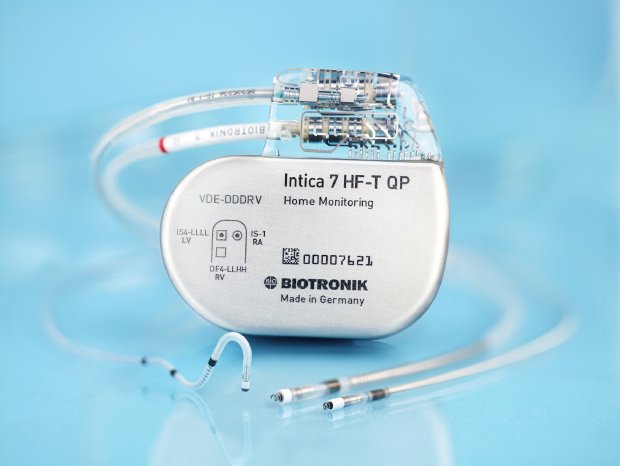“The technology in the Intica CRT-D directly addresses a lot of the concerns surrounding cardiac resynchronization therapy, and it makes my job easier because of the increased options available,” said Dr. Kaoru Tanno from Showa University Koto Toyosu Hospital. “The MultiPole Pacing (MPP) feature also efficiently manages battery consumption while offering the potential to increase patients’ response to CRT.”
The Intica CRT-D is designed to address the 30 to 40 percent non-response rate to CRT1 while providing exceptional battery life. The quadripolar technology allows for increased options in pacing the left ventricle (LV) while the new technology LV VectorOpt offers easy testing and selection of the optimal pacing vector. To further improve therapy success, this is complemented by a diverse portfolio of LV leads for various patient anatomies and target veins.
As with all latest BIOTRONIK products, Intica is equipped with ProMRI® technology, meaning patients can undergo vital MRI scans. For added safety, it also features the award-winning MRI AutoDetect, whereby the device can recognize when it is in an MRI environment, switch itself to MRI mode, and then switch itself back to full functionality after the scan. This minimizes the time that the device is in the reduced-functionality MRI mode to only the length of the scan, for improved safety for the patient and ease of workflow for the physician.
BIOTRONIK Home Monitoring Reduces Mortality
Intica patients will also benefit from BIOTRONIK Home Monitoring®, which allows physicians to monitor patients remotely. The system streamlines workflow and has been proven by the IN-TIME study2 and TRUECOIN meta-analysis3 to reduce all-cause mortality by slowing heart failure progression.
“With the launch of Intica CRT-D in Japan we are enhancing our already impressive CRT portfolio with market-leading functionalities,” said Jeffrey Annis, Managing Director BIOTRONIK Japan. “We want to deliver more options for physicians and patients so the individual patient therapy needs are best met.”
References
1 Mullens W et al. JACC. 2009, 53(9).
2 Hindricks G et al. The Lancet. 2014, 384(9943).
3 Hindricks G et al. European Heart Journal. 2017, May 10.


